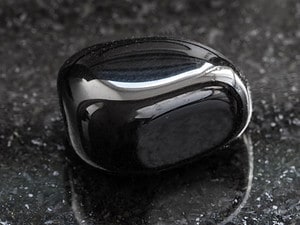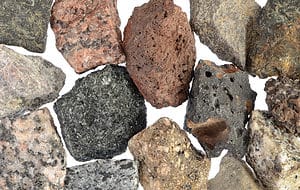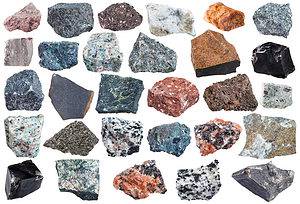All the rocks in the world are classified as igneous, sedimentary, or metamorphic. Igneous rocks form when magma cools slowly under the earth’s surface or rapidly when thrown out of an active volcano. These rocks are beautiful and fascinating, but they are also important commercially, for building materials, jewelry, fertilizers, and more, and they can tell us things about the geology of the interior of the Earth. Read on to learn more about igneous rocks and how you can recognize them when you go rock hunting.
Fun Facts About Igneous Rocks
- Igneous rocks are formed by cooling magma under the earth’s surface or cooling lava near or on the earth’s surface.
- Pumice is an igneous rock that can float on water because of gas pockets in its pores.
- You may have igneous rocks in your house, as it is a common material for construction, interior design, decorative items, and jewelry.
- Obsidian is a kind of volcanic glass that is sharper than a scalpel and was used in ancient times to perform surgery.
- Half Dome, the most famous feature of Yellowstone National Park, is a gigantic igneous rock.
- Color is one of the means of classifying these rocks, but you have to break the rock to see the interior color because weathering can affect the exterior.
How Igneous Rocks Form
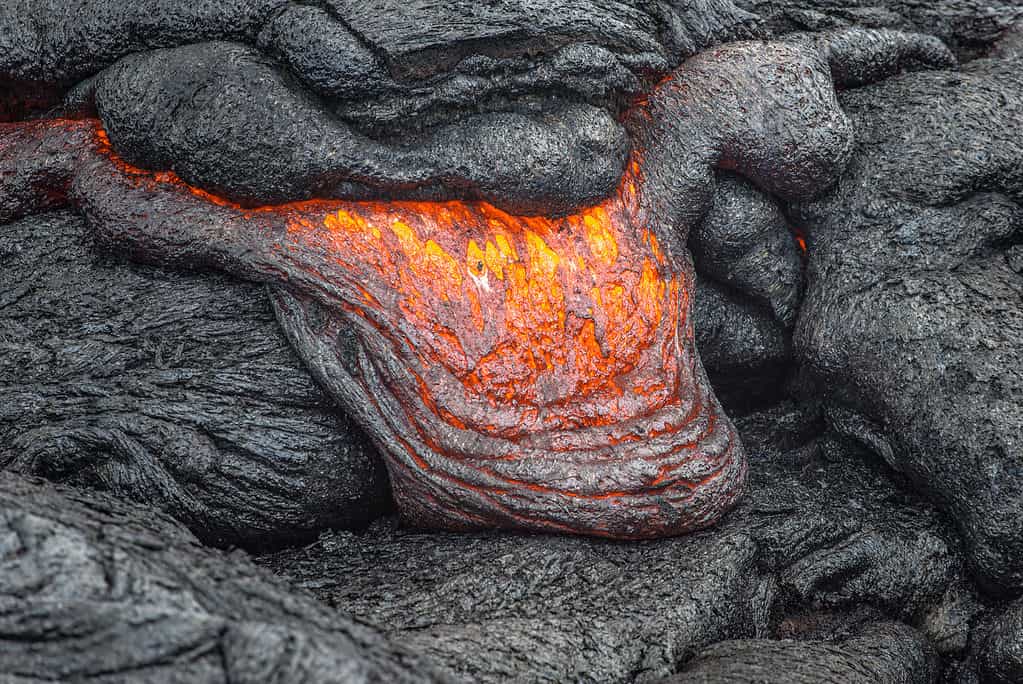
Igneous rocks are formed from the cooling of molten magma.
©Pung/Shutterstock.com
Igneous rocks form when magma or lava cools, but this can happen under different conditions that result in different kinds of rocks. The two main types of igneous rocks are intrusive and extrusive.
- Intrusive rocks form when magma cools and solidifies inside the Earth without reaching the surface. It cools slowly, so crystals have longer to grow and become large chunks of mineral within the rock. Some of the more common intrusive rocks are granite, gabbro, or diorite.
- Extrusive rock is a type of igneous rock that forms when magma reaches the Earth’s surface and becomes lava. Extrusive rocks can form in lava flows or in pyroclastic material thrown into the air in a volcanic eruption. In either case, the lava cools too fast for large crystals to form, so the rock will have a fine-grained texture. Examples of these types of rocks are andesite, rhyolite, and many more.
Classifications
Igneous rocks are classified not just as intrusive or extrusive, but in other categories as well. Two other classifications for these rocks are texture and composition.
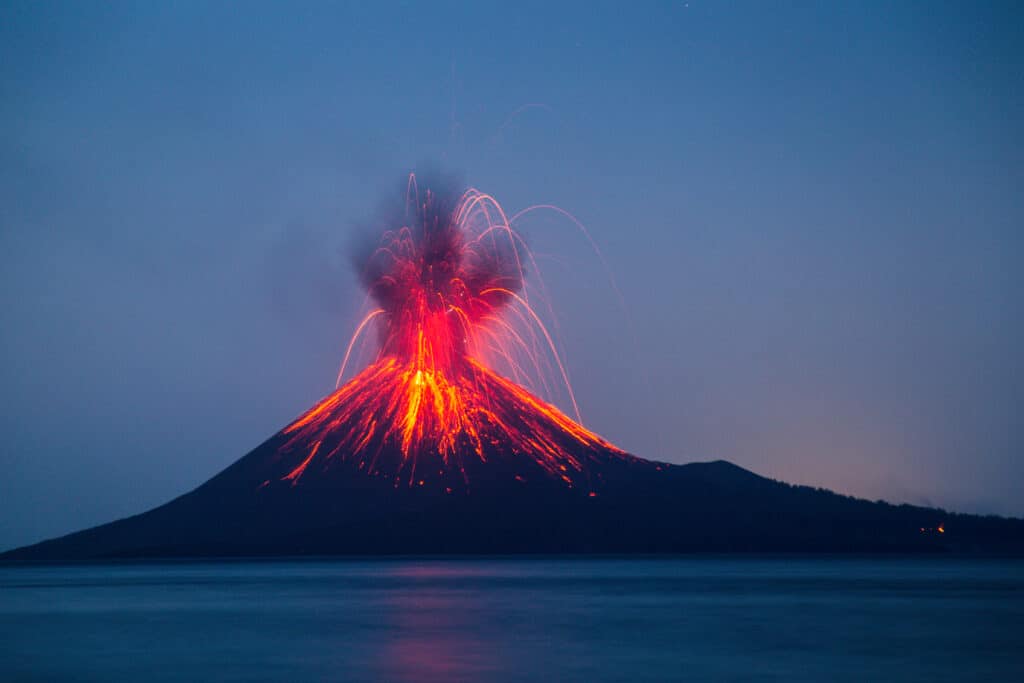
Igneous rocks of various kinds solidify from lava flows and chunks of lava flung out into the air by a volcanic explosion.
©Deni_Sugandi/Shutterstock.com
Texture
Igneous rocks come in six main types of textures:
- Aphanitic textures are found in rocks such as basalt, andesite, and rhyolite. These crystalize rapidly at or near the surface. They do not have time to form large crystals, so they have a fine-grained structure that cannot be seen with the naked eye.
- Glassy or vitreous textured rocks like obsidian and pumice have few or no crystals because the heat of the lava is quenched quickly by water, for example.
- Pegmatitic textures occur during slow cooling. Minerals in the rock may grow so large they can reach sizes of a few inches to several yards. Pegmatites are examples of this kind of texture.
- Phaneritic texture forms from slow cooling, resulting in crystals that can be observed with the naked eye. Examples include gabbro, diorite, and granite.
- Porphyritic texture results when conditions change quickly as magma is still cooling. This results in a rock with some large crystals embedded in rock with a finer crystalline structure. This can also be the result when a volcano erupts, flinging out rock that has not yet finished forming large crystals, then rapidly cools at the surface with small crystals.
- Pyroclastic textures result from explosive eruptions that fling out rocks in glassy fragments, such as ash, lapilli, and volcanic bombs.
Composition
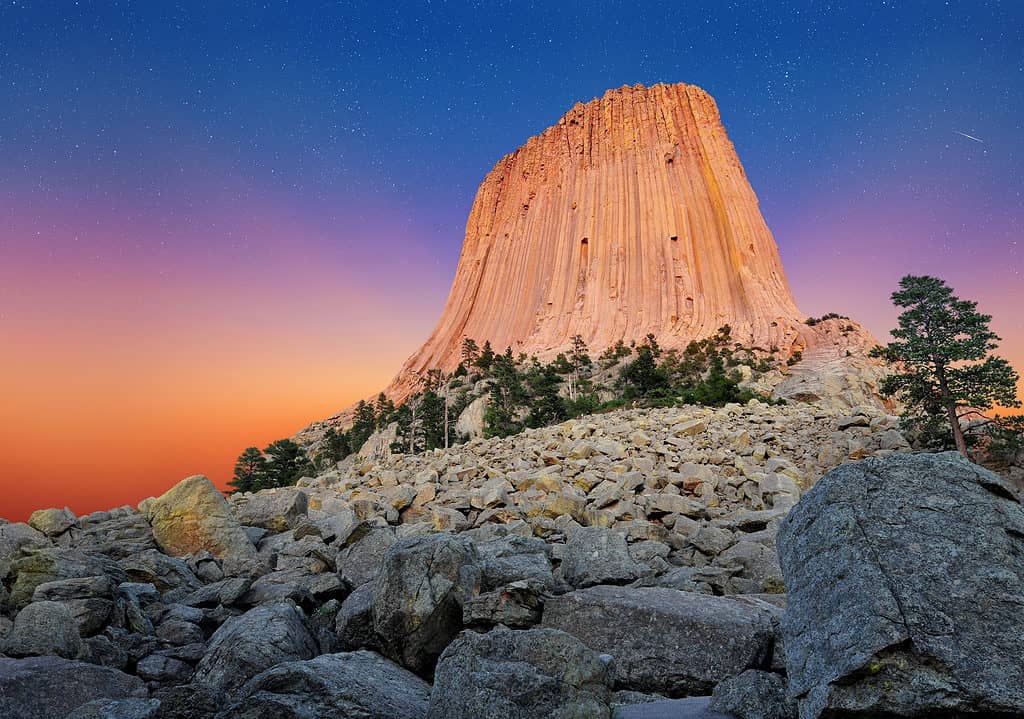
Devil’s Tower, WY, is the igneous core of an extinct and eroded volcanic cone.
©iStock.com/LaserLens
There are three main igneous rock compositions:
- Felsic (granitic) – These rocks are high in silica and low in iron and magnesium. They come in light colors like white, pink, tan, light brown, or light grey.
- Intermediate (andesitic) – This classification is for rocks that have proportions of silica, iron, and magnesium between the levels of felsic and mafic rocks. Their colors are medium shades of green, grey, or brown.
- Mafic (basaltic) – Rocks that are high in iron and magnesium and low in silica. These rocks are dark colors like black or very dark shades of brown, grey, or green.
Commercial Uses
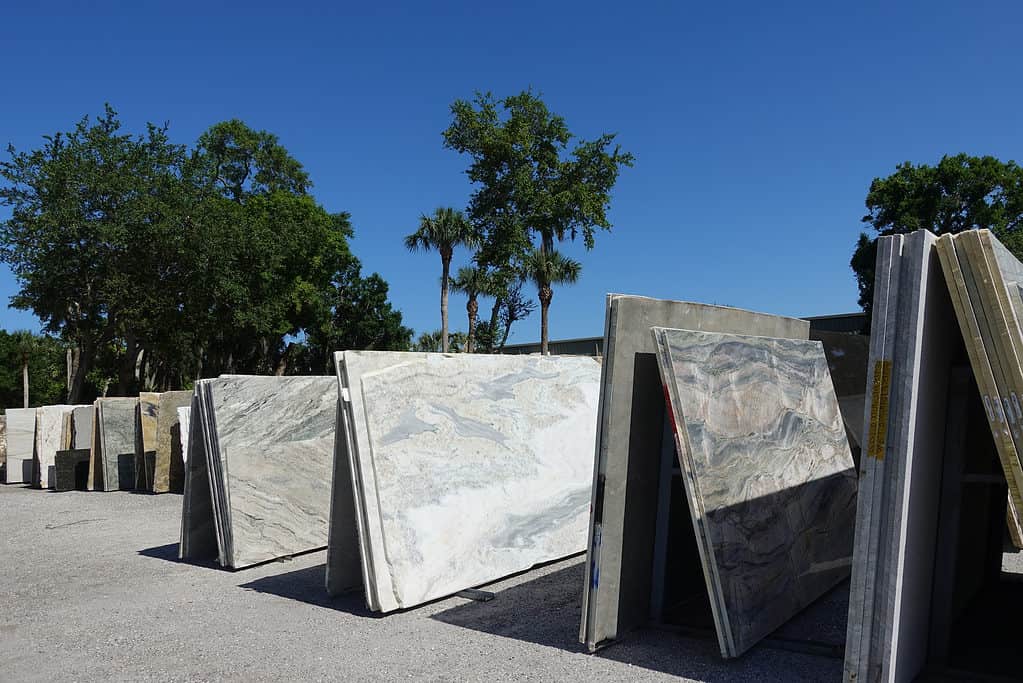
Granite is a type of felsic intrusive igneous rock that is granular and phaneritic in texture. Granites can be mostly white, pink, or gray in color.
©Joni Hanebutt/Shutterstock.com
Igneous rocks have a lot of commercial uses. Granite and basalt are popular materials for buildings, roads, and landscaping. Pumice and perlite are used as abrasives and as part of the manufacturing process of insulation and ceramics. Perlite is also an additive to potting soils and gardens to assist soil drainage. Semi-precious stones like amethyst and garnet are valued in jewelry. Obsidian, granite, and volcanic glass can make beautiful sculptures and accent pieces for interior design and landscaping. Igneous rocks are essential to the manufacture of cement, glass, and other materials modern society relies upon.
Where To Find Igneous Rocks
How Common Are They?
As one of the basic types of rocks found in the world, igneous rocks can be found all over the planet. Taken together with metamorphic rocks, which are sedimentary or igneous rocks that have been transformed physically or chemically, they make up 90-95% of the top 10 miles of the earth’s crust.
Finding Them in Rural Areas
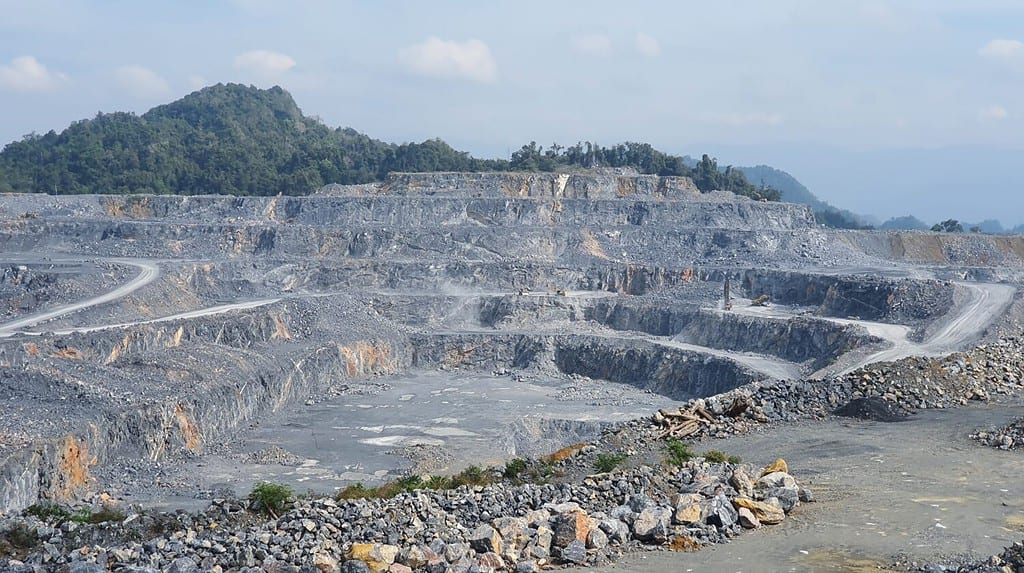
If you have access to a rock quarry, that can be an awesome place to observe geologic strata and identify rock types.
©Parmna/Shutterstock.com
In many places, igneous rocks have been overlaid with thick layers of sedimentary rocks. Great places to find igneous rocks are road cuts and quarries that expose geologic layers. Mountain ranges are also areas where plate tectonics may have pushed up a large number of igneous rocks. You might find igneous rocks in a stream bed that washes down from higher elevations.
Finding Them in the City

One of the first places you might spot an igneous rock in the city is as a construction material in buildings, or even the countertop in your kitchen!
©Lars Juhl Jensen from Copenhagen, Denmark, CC BY 2.0 – License
Even if you live in the city, igneous rocks are pretty easy to find. Check out the stone used in buildings, monuments, gravestones, landscaping, retaining walls, and water features. Granite, basalt, and igneous rocks are popular for these applications because of their strength, durability, weather resistance, and beauty. Look around your house, workplace, or public buildings. Igneous rock is often used for scratch- and heat-resistant kitchen and bathroom countertops, decorative objects such as sculptures or paperweights, or as focal points in aquariums. Check out your jewelry box or the ring on your finger. The pretty stone you’re wearing might actually be an igneous rock.
How Can You Identify Igneous Rocks?
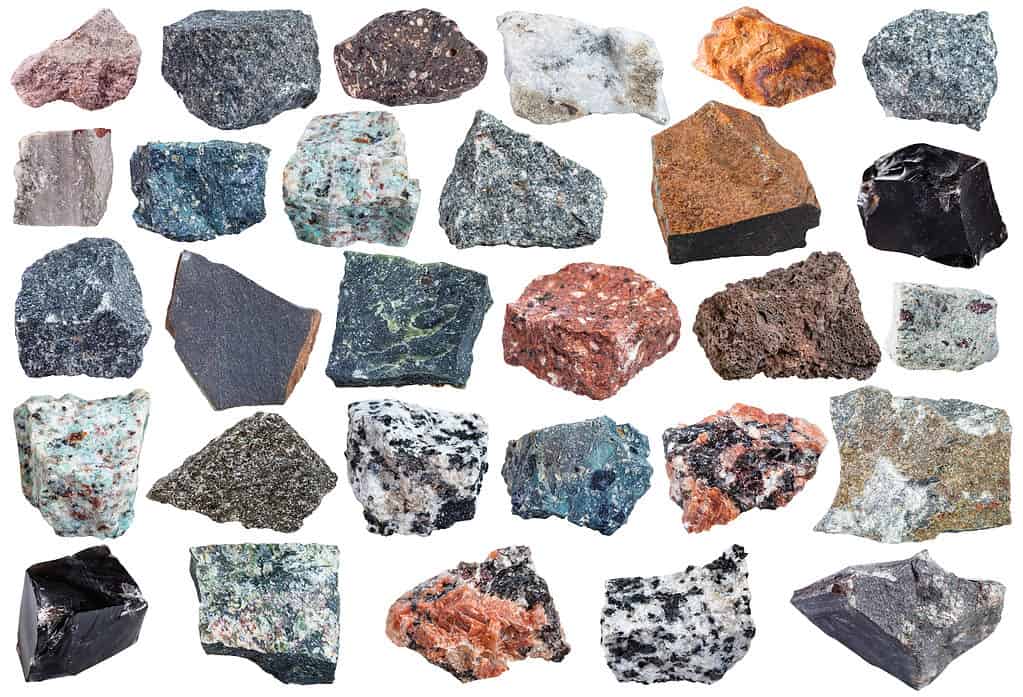
Igneous rocks can come in a variety of colors, but some common colors include black, gray, white, and pink.
©vvoe/Shutterstock.com
There are several ways that an amateur can tell if a rock is igneous:
- Texture: Igneous rocks have a coarse, grainy texture.
- Color: Some common colors include black, gray, white, and pink. Breaking a sample with a hammer to see the interior will give you a truer picture of its color.
- Hardness: Igneous rocks are often hard enough to scratch a steel knife blade.
- Luster: Igneous rocks have a dull or glassy look to them.
- Mineral content: Igneous rocks contain a lot of silicate minerals such as feldspar, quartz, and mica.
- Environment: You can often find them in areas where volcanic activity has occurred in the past.
It can be especially hard to distinguish between igneous and metamorphic rocks. If you are unsure, consult a geologist or a rock identification guide.
Favorite National Parks for Amateur Geologists
Although you can likely easily find small igneous rocks where you live, if you would like to see larger igneous formations or a larger variety of them, you might want to visit one of these national parks.
- Volcanoes National Park, Hawaii: Home to world-famous active volcanoes and enormous fields of lava flows. A geologist’s dream!
- Devils Tower National Monument, Wyoming: A huge igneous rock that is the solidified core of an ancient volcano. Most people will recognize it from the movie “Close Encounters of the Third Kind.”
- Mount Rushmore, South Dakota: This famous monument features enormous busts of Presidents Washington, Jefferson, Theodore Roosevelt, and Abraham Lincoln, all carved out of solid granite.
- Yosemite National Park, California: The most famous site here is Half Dome, a large igneous rock formation popular with climbers.
- Grand Canyon National Park, Arizona: This is the place to go to observe all kinds of rock types and strata dating back millions of years.
- Joshua Tree National Park, California: Here you can see not only iconic Joshua trees but desert and mountain areas with unique and beautiful igneous rock formations.
Remember to follow all the park’s rules regarding touching or removing rocks. These parks receive millions of visitors a year. If everyone took home one small rock, it would be like ants systematically eating a cake until it was all gone. Don’t do it. But go look, take pictures, and admire the beauty of igneous rocks.
The photo featured at the top of this post is © Artography/Shutterstock.com
Sources
- Lumen Learning, Available here: https://courses.lumenlearning.com/geo/chapter/reading-how-are-igneous-rocks-classified/
- Wikipedia.org, Available here: https://en.wikipedia.org/wiki/Igneous_rock
- USGS, Available here: https://www.usgs.gov/faqs/how-did-half-dome-massive-rock-monument-yosemite-national-park-acquire-its-unique-shape
- Turito.com, Available here: https://www.turito.com/learn/physics/igneous-rocks-grade-4
- University of California, Available here: https://www.universityofcalifornia.edu/news/solving-mystery-floating-rocks#:~:text=Pumice%20stones.,-Credit%3A%20Berkeley%20Lab&text=While%20scientists%20have%20known%20that,for%20example%2C%20it%20will%20sink.
- CNN.com, Available here: https://www.cnn.com/2015/04/02/health/surgery-scalpels-obsidian/index.html
Thank you for reading! Have some feedback for us? Contact the AZ Animals editorial team.



